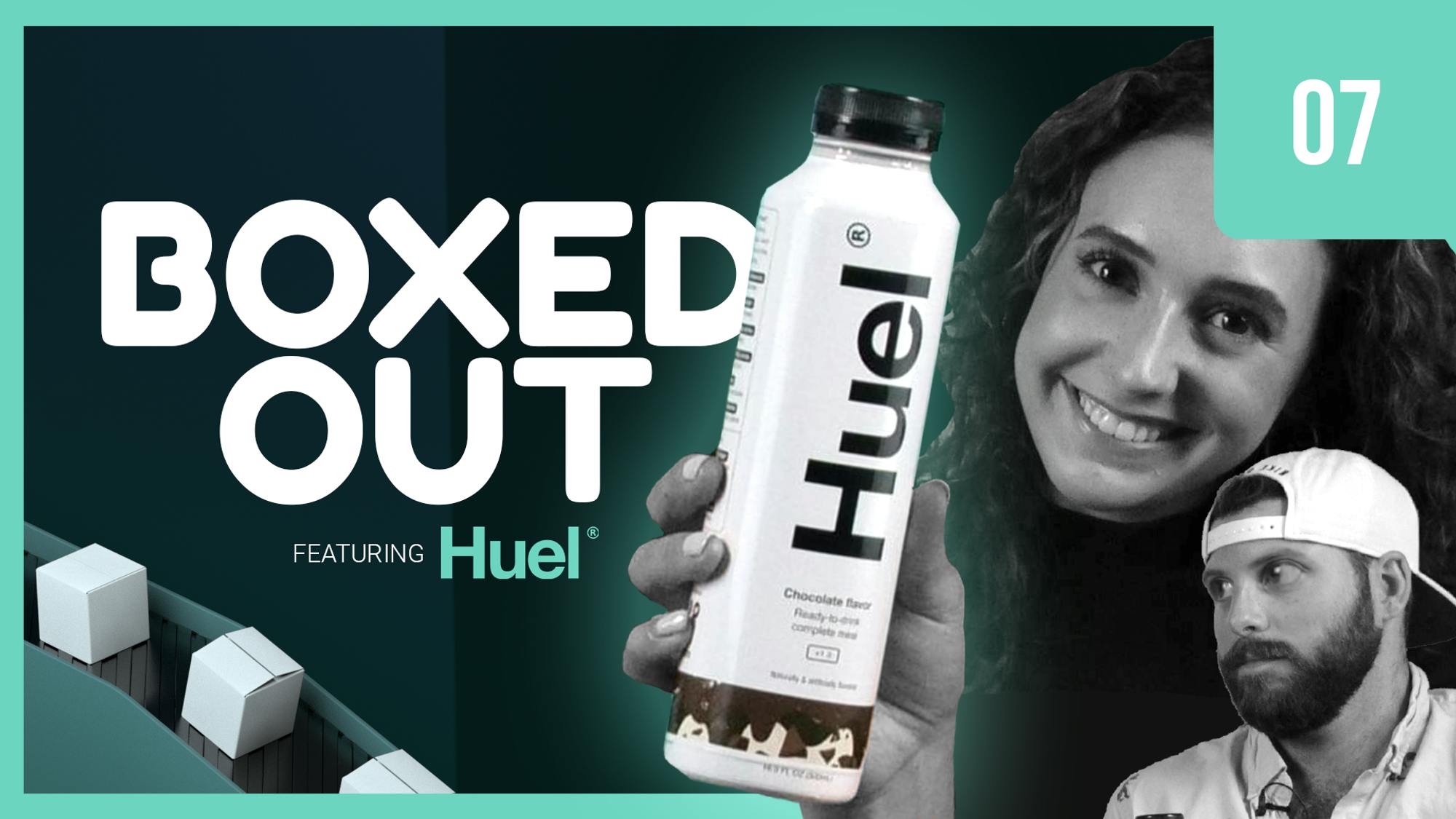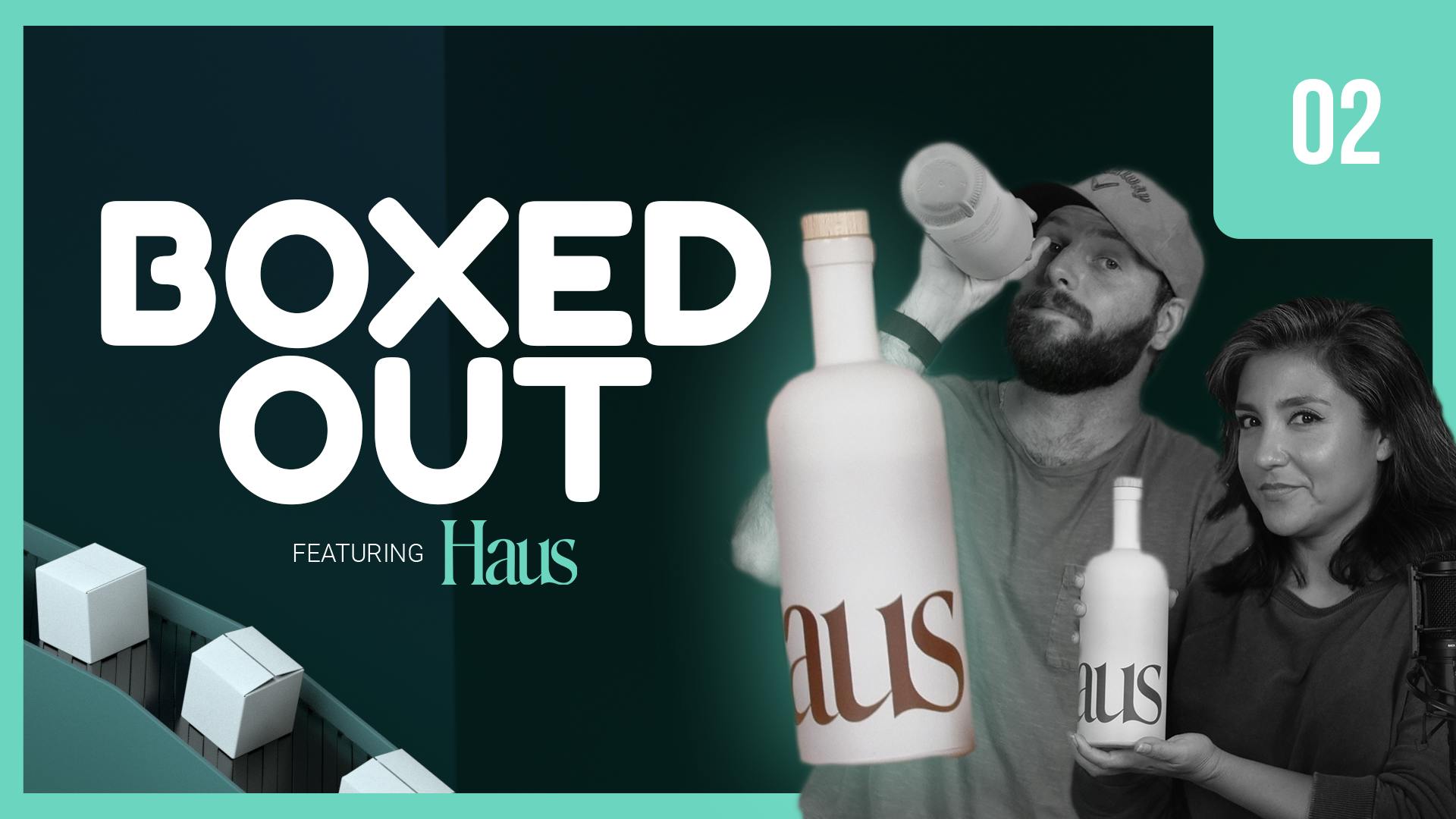
Fresh Clean Tees' retention is a pretty good fit
This episode might reference ProfitWell and ProfitWell Recur, which following the acquisition by Paddle is now Paddle Studios. Some information may be out of date.
Please message us at studios@paddle.com if you have any questions or comments!
Today we're talking about Fresh Clean Tees, a company taking on the T-shirt market with strong positioning and even stronger designs. We're gonna break down what they do well—and not so well—in terms of retention, making this episode a case study you can apply to your own DTC brand.
Quality, customer service, and communication has been at the center of everything Fresh Clean Tees does. Because of that, it has successfully positioned itself as the trusted brand for men’s basics. Today, Fresh Clean Tees is a multi-million dollar company with thousands of subscribers, and a bounty of positive reviews. But when it comes to retention… can they do better?
Key takeaways:
Cancellation flow needs to be updated
Though Fresh Clean Tees did collect information on the reason for cancelling, there were no prompts with salvage offers, or win-back campaigns once the subscription was cancelled. They need some sort of salvage offer to entice people stay. You can save 15-30% of customers through salvage offers and a clear off-boarding experience. Some customers need a bit more persuading, and if their reason for cancelling is because they're not seeing the value, a proper salvage offer could make the difference.
- Gather more information in order to fix retention properly for your different customer segments.
- Include dynamic salvage offers.
- Implement win-back campaigns through email and/or SMS messages.
Term optimization needs to have a stronger focus
Fresh Clean Tees is currently not offering some sort of pre-pay or cash off in exchange for an extended subscription. Remember that longer-term subscriptions retain customers at a 15-30% higher rate than monthly subscriptions. And for the type of product and convenience that Fresh Clean Tees offers, this is a missed opportunity. Their customers would likely enjoy setting and forgetting their subscription.
- Offer longer-term plans in exchange for a discount (physical amounts off instead of percentages) or access to an exclusive pack.
- Invite customers to upgrade after the purchase has been made, as well as before.
- Remind customers to upgrade to a longer-term plan with a plain text email and offer a one-click upgrade.
Fresh Clean Tees needs to revamp their credit card failure process
Fresh Clean Tees is losing a lot of money by only covering the basics, as well as adding some needless friction to their process. Credit card failures account for 20-40% of your churn and cancellations. Remember, these customers aren’t leaving because they didn’t like your product, most of them aren’t even aware their payment failed. You need to remind them of they value you provide them.
- Send four to five plain text emails that go out in an intelligent drip based on the customer's behavior and data.
- Add SMS messages to your flow.
- Recognize and message expired credit cards.
- Allow users to update their payment information without logging in
Fresh Clean Tees
The T-shirt is a classic. You can say with certainty that the majority own one—or 10. Did you know that T-shirts began as an undergarment for men? Dating back to the Middle Ages. T-shaped shirts made of woven cotton or linen provided a layer between the body and the garments worn over the top. Later it would become standard to the army and navy uniform. Hollywood’s leading men would also forever change this “undergarment” into a timeless iconic staple.
Today, the T-shirt business is a multi-billion dollar industry. It clearly continues to thrive because honestly who can have enough shirts?
But just because the T-shirt business is huge doesn’t mean it’s perfect. Matthew and Melissa Parvis noticed some major flaws in the market, specifically for men’s basics. Men’s tees and basics typically fell into two categories: great fit, high price, or inexpensive but poorly made. With the subscription market growing, the solution was clear: offer a subscription service for quality and affordable basics.
The husband and wife team decided to do just that, and without hesitation they founded Fresh Clean Tees going from an idea in May 2015, to opening its virtual doors in November of the same year.
Fresh Clean Tees' success
Within the first several months they were seeing 200% month-on-month growth, thanks to a focus on two major components.
First, great design. Listening to their customer’s needs and preferences is what has led to the development of a design and fit that is loved and trusted by thousands.
Second, customer service and communication has been at the center of everything they do. The manner in which Fresh Clean Tees handles and resolves any issues that arise, has been key in retaining its customers. Furthermore, listening to its customer’s needs and preferences is what has led to the development of a design and fit that is loved and trusted by thousands.
Fresh Clean Tees are designed with great attention to detail and made with a 60/40 cotton/poly blend making them super soft and comfortable. This fabric cocktail also ensures the shirts retain a nice and reliable fit that doesn’t shrink over time. The shirts are also developed with a side seam, giving them a highly stylish structure that allows them to be worn alone. They offer a plethora of colors and styles with even more in the making.
Customers rave about the quality and fit of Fresh Clean Tees, as well as the level of exceptional customer service provided. In just five years, they have positioned themselves as the trusted brand for men’s basics.
Today, Fresh Clean Tees is a multi-million dollar company with thousands of subscribers, and a bounty of positive reviews. But when it comes to retention… what could they do better?
Retention Review
Fresh Clean Tees has great positioning and design, but its retention needs some TLC. This is common for most brands, focusing instead on acquisition and Facebook, Instagram, Snapchat, and ads. Unfortunately this is not a sustainable strategy.
Why is retention important?
You spend half of your budget and time acquiring customers, but to be successful, you need to keep them. The beauty of the subscription model is that the relationship with the customer is baked directly into how you make money. If that customer is happy, they'll keep buying from you in the long term. If they're upset or not seeing the value, they'll cancel—quickly.
Plus, money talks here. Subscription ecommerce companies using the tactics we're going to talk about have 2x the customer lifetime value (LTV), 2x the average order value, and 3x higher growth rates, because they're not worried about plugging a leaky retention bucket.
To highlight the importance here, let's look through Fresh Clean Tees' retention strategy and break down what they're doing well, and not so well, so you can learn for your own DTC business.
Retention has three parts:
- Active churn, which are customers who are actively choosing to cancel your product.
- Expansion revenue, which are your existing customers that buy more product.
- Delinquent (or involuntary) churn, which are customers who's credit card or payment has failed, which sadly is one of the largest single buckets of where you're losing money.
Active Churn
When we look at Fresh Clean Tees' active churn, there are so many reasons why a customer may cancel—some you can control, others you can't. We want to make sure Fresh Clean Tees is not only setting up their customers for long-term retention in the initial purchasing process, but that they're also collecting information on why someone's cancelling, if they so happen to, in order to get a clean cycle of retention improvement.
The good:
Fresh Clean Tees is actually doing a pretty good job when it comes to their active churn prevention. For one, they offer a pretty wide variety of options for you to purchase one time or through a subscription purchase. From different colors and sizes to options around crew vs. v-neck. The key here is to make sure customers get exactly what they want so they retain longer.
This is a bit of a risk though, because as we've seen with Wohven, one of their competitors, sometimes offering up very narrow options allows customers to self-select if they're a good fit, instead of worrying about different user-experience flows. Fresh Clean Tees overcomes this by offering up a traditional ecommerce shopping experience that then prompts for a subscription as opposed to being a subscription at it's core.
It's a risk, but it gives them a wider set of buyers to target. I bet Wohven's 60-day plus churn is actually better, but Fresh Clean Tees probably has more volume in the first 30 days relative to size and spend.
One other fascinating piece here is the use of ShoppingGives, which allows the buyer to select a donation with a percentage of the cart value. This seems like an extremely subtle add-on, but we've consistently seen that those individuals who have a donation attached to their subscription tend to retain at a 10 to 20% higher rate than those who don't have a donation attached. This is based on a study we completed on just over 30,000 DTC subscription customers.
Fresh Clean Tees is one of the few brands taking advantage of this retention tactic, which not only helps keep customers around longer, but obviously helps the world, as well.
Needs improvement:
Fresh Clean Tees's cancellation flow was the one area where we'd make some tweaks pretty quickly. It wasn't terrible. In fact, their account experience is actually great and they're highlighting all the right options to swap out products or delay shipment for a period of time.
The bigger issue was when you went through their cancellation off-boarding. It did collect the reason we were cancelling, but the offers were essentially all the same. We'd want to see some sort of salvage offer here to keep folks around. This could be old inventory, a discount, or any other offer that entices the customer to stick around longer.
We need to keep in mind that there's a group of customers that need to be coaxed a bit more into the value you're providing, so you need to play the long game, especially if they selected something like “not being a fan of the quality,” or “not seeing the value.”
Expansion Revenue
Expansion revenue is crucial, because your existing customers are more than willing to buy 3x more from you—you just have to make sure to ask. Plus, those customers who have at least one add-on or additional purchase tend to have 18-54% higher lifetime value, meaning they're paying you more over the life of the subscription, but they're also sticking around longer, because they're more ingrained within your product.
The good:
We mentioned this a bit before, but Fresh Clean Tees does a really good job with their account experience and order process. They’re not hitting you over the head with offers here, but when you go to check out they're putting different options below the fold of what “customers also bought.” These are cheaper options that are easy to add.
It's actually a really subtle and slick experience versus some of the pop ups we've seen for different add-ons that are likely more effective, but also more obtrusive. I actually like the account experience because it's built out with plenty of one-click add-ons that can be added to your next shipment. Not everyone is going to click on these, but you're only looking for a percentage to do so, to expand average order value, and ultimately, your expansion revenue.
Needs improvement
The one area where I think they should add some one-click order add-ons, is to the order confirmation page. Dollar Shave Club pioneered this tactic and essentially set up some exclusive offers that you could only add when you hit the order confirmation page. It's prime real estate, and right now Fresh Clean Tees isn't using it at all.
Credit Card Failures
Now let's talk about the sexiest topic in the world—credit card failures. We know you don't wake up sweating in the middle of the night thinking about credit cards—that's our job—but here's why we obsess over things like this: just under 40% of the customers that leave you are leaving you because of failed payments. To get these folks back, we want to make sure Fresh Clean Tees is treating these folks like a marketing channel, sending them messages before the point of failures, all the way to after the point of failure through email and text messages.
Needs improvement
This is where Fresh Clean Tees has done a minimal job and there's a lot of room for improvement. They sent us only one mostly market-y email with fairly decent copy. But, keep in mind that plain text emails that appear to be coming from an actual human work so much better. Individuals feel more obligated to act with a plain text vs. a market-y email, which is easy to ignore.
They're definitely missing out by not having a cleaner, plain text focus and more emails. We normally want to see four to five emails. These should be sent in an intelligent email drip over a 14-day period after the initial card fails, easing the customer back and reminding them of the value they get from Fresh Clean Tees. Remember, that if you don't get updated payment information, these customers aren't coming back and you can make this a great experience. Also, why no text messages for the payment failure? Definitely something to add.
One other piece we noticed is they're making you log back in to update your credit card. This is a lot of needless friction and they should instead be sending you to a mobile-optimized form that simply takes the updated payment information. A lot of DTC customers don't actively log in to their accounts, so they forget passwords. Make the experience frictionless.
Based on what we're seeing, Fresh Clean Tees could double their recovery rate. We don't have perfect insight into their business, but that's likely hundreds of thousands, if not millions in lifetime value.
Overall:
Fresh Clean Tees has done a fairly good job with their retention with some notable exceptions, so there's a bit of work to be done. They just need to take the talent they've applied to the brand, product, and experience and apply it more to the retention side of their business.
Retention Revamp
Let's revamp. First though, why do we feel we have any authority to even talk about this? Roughly 20% of the entire subscription market is using ProfitWell, so we're sitting on more data than anyone else. Simply put, we have the data to know what works and what doesn't, and we care more about this problem than anyone else out there.
Let's walk through three big things we'd change immediately about Fresh Clean Tees' retention strategy, so we can all learn for our own brands.
3 takeaways
- Update that cancellation flow. Right now it's not bad, but it's probably not giving Fresh Clean Tees enough information to go back and fix their retention properly with their different customer segments. The offers also don't appear to be that dynamic and the design could use some work. This is more of an optimization versus something major. Yet, there's likely incremental improvement to be made in the number of customers they can save through just these basic design optimizations.
Another big piece here is salvage offers and win-back campaigns. We weren't prompted with an offer in the cancellation flow to stay with the subscription. Also, one of our subscriptions was cancelled in December 2019, and the other in June 2020, but we haven't really received any solid win-back emails or SMS messages. There's a good amount of users who just need to be reminded of the experience, rather than treated like everyone else. - Fresh Clean Tees needs to go much deeper on term optimization. Right now we're not seeing a customer able to pre-pay for an extended subscription in exchange for some cash off. This is a missed opportunity for a customer type that really cares about the freshness of the product. I'm sure some buyers may just want to set it and forget it with their deliveries and such. Give me the opportunity to buy an annual or even six months for a bit of a discount or even some sort of an offer.
The big thing to keep in mind here is that those longer-term subscriptions retain customers at a 15 to 30% higher rate than monthlies as we found in doing a study on over 2,000 DTC subscription companies, so even an incremental amount of customers on these plans will pay dividends.
Keep in mind that you can ask customers not only in the checkout flow, but also AFTER the purchase has been made. New users may want to try the product out before committing to something longer, so reminding them through a plain text email with an offer and then a one-click upgrade to a longer-term plan helps boost overall lifetime value considerably. - Fresh Clean Tees needs a complete overhaul of their credit card failure process. They're losing a good amount of money by only doing the basics. They need four to five plain text emails that go out in an intelligent drip based on user behavior and data, after they realize the card declined. They need SMS messages, they need to recognize and message expired credit cards, and they need to allow users to update their payment information without logging in.
We have hope for Fresh Clean Tees on this axis because these changes aren't major, but they'll have a big impact. They can actually GAIN market share and retention by applying the great copywriting and marketing to this part of their flows. They clearly take optimization seriously. It's just a great company and we know they can succeed here in boosting that recovery rate substantially.
Who's up next?
That’s it for season two of Boxed Out. We're heading on a break after a wonderful season of exploring the retention of many DTC brands. We'll be back soon though.
If you've enjoyed Boxed Out, make sure you're subscribed and tell your friends, and friends of friends, so we can get this knowledge into the hands of as many people as possible.





